 A mere five years elapsed from the time Echo,
a gas-filled metallized plastic sphere that passively reflected radio signals back
to Earth, was launched and the time that 35
television cameras had been launched into space. The Space Race
was at a fever pitch. Although the Ruskies beat us in being the first to launch
both an active satellite (Sputnik) and a man
(Yuri Gagarin) into space, America's deep pool of
intellectual resources, consisting of both native scientists and many of the world's
top scientists who chose to flourish in freedom here rather than oppression behind
the Iron Curtain, fostered the advantage that in short order established the United
States as the leading super power both in space and on terra firma. TIROS
satellites began providing real-time visual data on the Earth's weather in 1960.
Not only were cameras transmitting images of the Earth...
A mere five years elapsed from the time Echo,
a gas-filled metallized plastic sphere that passively reflected radio signals back
to Earth, was launched and the time that 35
television cameras had been launched into space. The Space Race
was at a fever pitch. Although the Ruskies beat us in being the first to launch
both an active satellite (Sputnik) and a man
(Yuri Gagarin) into space, America's deep pool of
intellectual resources, consisting of both native scientists and many of the world's
top scientists who chose to flourish in freedom here rather than oppression behind
the Iron Curtain, fostered the advantage that in short order established the United
States as the leading super power both in space and on terra firma. TIROS
satellites began providing real-time visual data on the Earth's weather in 1960.
Not only were cameras transmitting images of the Earth...
 An RF Cafe visitor sent this equation to
me a few years ago. It can be found all over the Internet (including here), but
I cannot determine a definite origin. Mathematicians claim that math can explain
everything in the universe, which is not quite true. It can't for example, explain
why my next-door neighbor is a junk hoarder. This
Christmas equation
does not appear to begin with a particular application; it looks like something
from a set of textbook end-of-chapter problems. Even if you don't celebrate Christmas,
it provides a secondary benefit by demonstrating rules for the manipulation of logarithms
and exponents along with basic algebraic rearrangements of terms...
An RF Cafe visitor sent this equation to
me a few years ago. It can be found all over the Internet (including here), but
I cannot determine a definite origin. Mathematicians claim that math can explain
everything in the universe, which is not quite true. It can't for example, explain
why my next-door neighbor is a junk hoarder. This
Christmas equation
does not appear to begin with a particular application; it looks like something
from a set of textbook end-of-chapter problems. Even if you don't celebrate Christmas,
it provides a secondary benefit by demonstrating rules for the manipulation of logarithms
and exponents along with basic algebraic rearrangements of terms...
 At the end of World War II, the United
States government demonstrated an appreciation for the extreme sacrifices made
by its citizens by making surplus materiel available for purchase at very low
cost. Companies sprang up as distributors after bidding on and buying large lots
of items at auctions.
Herschel Radio Company was one of many. This 2-page
advertisement on a 1948 issue of Radio-Craft magazine is typical of
what was seen in all sorts of technology publications in the late 1940s. A
complete Fairchild model SCR 269/F airborne radio compass was offered at a mere
$75 ($998 in 2024 money). A Hallicrafters model SX-28...
At the end of World War II, the United
States government demonstrated an appreciation for the extreme sacrifices made
by its citizens by making surplus materiel available for purchase at very low
cost. Companies sprang up as distributors after bidding on and buying large lots
of items at auctions.
Herschel Radio Company was one of many. This 2-page
advertisement on a 1948 issue of Radio-Craft magazine is typical of
what was seen in all sorts of technology publications in the late 1940s. A
complete Fairchild model SCR 269/F airborne radio compass was offered at a mere
$75 ($998 in 2024 money). A Hallicrafters model SX-28...
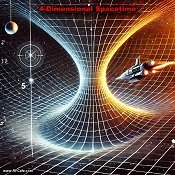 When I read this account of relativistic
space travel by Dr. Wernher von Braun in a 1963 issue of Popular Science
magazine, I was a bit dubious about numbers he presented because they seemed to
me to assume a fixed value of relativistic speed during the entire round trip.
It is an example of the
Twin Paradox. Time dilation, as predicted by Einstein's theory of Special
Relativity, is barely noticeable at 10% the speed of light (0.1c), and is not
really significantly noticeable until around 30% the speed of light (0.3c), so I
suspected that maybe he had simplified the answer. His space ship example
reached that speed at 3½ months with a steady 1 G acceleration rate. Not wanting
to go to the effort of figuring it out for myself, I asked ChatGPT 4.0 to assess
the article and render an opinion...
When I read this account of relativistic
space travel by Dr. Wernher von Braun in a 1963 issue of Popular Science
magazine, I was a bit dubious about numbers he presented because they seemed to
me to assume a fixed value of relativistic speed during the entire round trip.
It is an example of the
Twin Paradox. Time dilation, as predicted by Einstein's theory of Special
Relativity, is barely noticeable at 10% the speed of light (0.1c), and is not
really significantly noticeable until around 30% the speed of light (0.3c), so I
suspected that maybe he had simplified the answer. His space ship example
reached that speed at 3½ months with a steady 1 G acceleration rate. Not wanting
to go to the effort of figuring it out for myself, I asked ChatGPT 4.0 to assess
the article and render an opinion...
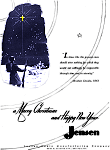 Seeing an advertisement like this from a
national corporation - especially one that did work for the government - in a major
magazine would be rare these days. In 1945 when this Christmas advertisement was
proffered by
Jensen Radio Manufacturing Company in Radio News magazine, it was
meant as an inoffensive message of thanks and goodwill to all people, and
particularly to servicemen who had just fought a difficult and sacrificial war.
Fortunately, World War II would be over before the next Christmas came around. Today, some would like to prosecute the purveyor for the crime of
"hate speech," which is basically anything suggesting America's founding was fundamentally
righteous and just. "Merry Christmas to all, and to all a good night!..."
Seeing an advertisement like this from a
national corporation - especially one that did work for the government - in a major
magazine would be rare these days. In 1945 when this Christmas advertisement was
proffered by
Jensen Radio Manufacturing Company in Radio News magazine, it was
meant as an inoffensive message of thanks and goodwill to all people, and
particularly to servicemen who had just fought a difficult and sacrificial war.
Fortunately, World War II would be over before the next Christmas came around. Today, some would like to prosecute the purveyor for the crime of
"hate speech," which is basically anything suggesting America's founding was fundamentally
righteous and just. "Merry Christmas to all, and to all a good night!..."
 The
Twin Paradox is a central thought experiment in Einstein's theory of Special
Relativity, vividly illustrating the phenomenon of time dilation. It involves a
scenario where one of two identical twins undertakes a journey into space at
relativistic speeds (approaching the speed of light), while the other remains on
Earth. Upon reuniting, the traveling twin is observed to have aged less than the
twin who stayed behind. This effect is not merely a theoretical curiosity but a
real consequence of the laws governing time and space. At the heart of the Twin
Paradox is the relativistic principle that time flows differently depending on
an observer's frame of reference. When objects move close to the speed of light,
their passage through...
The
Twin Paradox is a central thought experiment in Einstein's theory of Special
Relativity, vividly illustrating the phenomenon of time dilation. It involves a
scenario where one of two identical twins undertakes a journey into space at
relativistic speeds (approaching the speed of light), while the other remains on
Earth. Upon reuniting, the traveling twin is observed to have aged less than the
twin who stayed behind. This effect is not merely a theoretical curiosity but a
real consequence of the laws governing time and space. At the heart of the Twin
Paradox is the relativistic principle that time flows differently depending on
an observer's frame of reference. When objects move close to the speed of light,
their passage through...
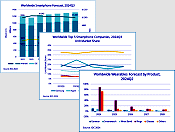 Here are eight
predictions for the semiconductor industry in 2025, per the IDC
(International Data Corporation). "1: Memory is expected to grow by more than
24%, mainly driven by the increasing penetration of high-end products such as
HBM3 and HBM3e with HBM4 expected to be introduced in H2. Non-memory is expected
to grow 13%, driven by demand for advanced node ICs for AI servers, high-end
mobile phone ICs, and WiFi7. 2: Asia-Pacific IC design market will grow 15% as
inventory levels stabilize, personal devices demand picks up, and AI computing
extends to a wide range of applications. 3: Under the traditional Foundry 1.0
definition..."
Here are eight
predictions for the semiconductor industry in 2025, per the IDC
(International Data Corporation). "1: Memory is expected to grow by more than
24%, mainly driven by the increasing penetration of high-end products such as
HBM3 and HBM3e with HBM4 expected to be introduced in H2. Non-memory is expected
to grow 13%, driven by demand for advanced node ICs for AI servers, high-end
mobile phone ICs, and WiFi7. 2: Asia-Pacific IC design market will grow 15% as
inventory levels stabilize, personal devices demand picks up, and AI computing
extends to a wide range of applications. 3: Under the traditional Foundry 1.0
definition..."
 The inventors should look into selling knitted
"tinfoil hats" using this technique! "Imagine taking the radio frequency properties
of the dish antennas you see on rooftops and
knitting them into a wearable garment - a sweater or a blanket that is ultralight,
portable, easy to fold up and stow away. Not having to use heavy, bulky satellite
antennas would make communications much easier for those who live or travel in remote
locations - a lightweight, flexible antenna that can send information over long
distances would be a useful tool for both the public and private sectors. A Columbia
Engineering team reports that they have used their expertise in metasurfaces...
The inventors should look into selling knitted
"tinfoil hats" using this technique! "Imagine taking the radio frequency properties
of the dish antennas you see on rooftops and
knitting them into a wearable garment - a sweater or a blanket that is ultralight,
portable, easy to fold up and stow away. Not having to use heavy, bulky satellite
antennas would make communications much easier for those who live or travel in remote
locations - a lightweight, flexible antenna that can send information over long
distances would be a useful tool for both the public and private sectors. A Columbia
Engineering team reports that they have used their expertise in metasurfaces...
 "Tsinghua University in Beijing began operating
its network in autonomous mode, also known as 'Level
4 network autonomy,' in September this year, I have confirmed. It's an impressive
achievement. But reader, I come bearing a second bulletin of autonomous network
news - and this one will cause a sharp intake of breath among Western comms vendors,
service providers and governments. China Mobile recently completed successful trials
of Level 4 autonomous networking in Guangdong province (population: 122 million)
and will begin its three-year program to deploy it nationwide in 2025. This is beyond
big - it is momentous. For perspective, Tsinghua University operates a not-for-profit
16,00..."
"Tsinghua University in Beijing began operating
its network in autonomous mode, also known as 'Level
4 network autonomy,' in September this year, I have confirmed. It's an impressive
achievement. But reader, I come bearing a second bulletin of autonomous network
news - and this one will cause a sharp intake of breath among Western comms vendors,
service providers and governments. China Mobile recently completed successful trials
of Level 4 autonomous networking in Guangdong province (population: 122 million)
and will begin its three-year program to deploy it nationwide in 2025. This is beyond
big - it is momentous. For perspective, Tsinghua University operates a not-for-profit
16,00..."
 "When your car breaks down, you take it
to the mechanic. When a computer chip fails, engineers go to the
failure-analysis team.
It's their job to diagnose what went wrong and work to make sure it doesn't in the
future. The International Symposium on the Physical and Failure Analysis of Integrated
Circuits (IPFA) is a yearly conference in Asia attended by failure-analysis engineers.
The gathering is mostly technical, but there's also a fun part: The Art of Failure
Analysis contest. 'It's all about creativity and strong imagination,' says Willie
Yeoh, chair of the Art of Failure Analysis..."
"When your car breaks down, you take it
to the mechanic. When a computer chip fails, engineers go to the
failure-analysis team.
It's their job to diagnose what went wrong and work to make sure it doesn't in the
future. The International Symposium on the Physical and Failure Analysis of Integrated
Circuits (IPFA) is a yearly conference in Asia attended by failure-analysis engineers.
The gathering is mostly technical, but there's also a fun part: The Art of Failure
Analysis contest. 'It's all about creativity and strong imagination,' says Willie
Yeoh, chair of the Art of Failure Analysis..."
 "The
aging radio system used by train drivers and signallers across the United Kingdom
is the cause of a major disruption for rail commuters nationwide Friday - another
sign of the UK's failing infrastructure. Services out of major transport hubs in
London, Manchester and Southampton were affected, the BBC said. Trains to and from
London's major airports were roiled by delays. Great Northern, ScotRail, Southern
and many other lines were also impacted. National Rail blamed the delays on a failure
of its specialized GSM-R rail communications system, which is based on the 2G..."
"The
aging radio system used by train drivers and signallers across the United Kingdom
is the cause of a major disruption for rail commuters nationwide Friday - another
sign of the UK's failing infrastructure. Services out of major transport hubs in
London, Manchester and Southampton were affected, the BBC said. Trains to and from
London's major airports were roiled by delays. Great Northern, ScotRail, Southern
and many other lines were also impacted. National Rail blamed the delays on a failure
of its specialized GSM-R rail communications system, which is based on the 2G..."
 "Being an
engineer in today's world is a very rewarding career experience, providing a
number of benefits and incentives for those employed full-time for a single
company. The advantages are usually in line with long-term career development,
access to resources, and financial stability. Having such a career eliminates
the stress associated with constantly looking for new projects and clients, and
most reputable companies allow for access to the latest tools, equipment, and
software that may not be affordable anywhere else. Of course, salary is the
biggest draw when working at a single company. Our recently conducted salary and
career survey paints some pretty interesting numbers when it comes to
engineering trends. Those working in full-time positions have decreased when
compared to last year..."
"Being an
engineer in today's world is a very rewarding career experience, providing a
number of benefits and incentives for those employed full-time for a single
company. The advantages are usually in line with long-term career development,
access to resources, and financial stability. Having such a career eliminates
the stress associated with constantly looking for new projects and clients, and
most reputable companies allow for access to the latest tools, equipment, and
software that may not be affordable anywhere else. Of course, salary is the
biggest draw when working at a single company. Our recently conducted salary and
career survey paints some pretty interesting numbers when it comes to
engineering trends. Those working in full-time positions have decreased when
compared to last year..."
- references/electronics-world/comics-oct-1961-electronics-world-oct-1956-popular-electronics.htm
- references/electronics-world/comics-oct-1963-electronics-world.htm
- references/electronics-world/electronic-crossword-july-1961-electronics-world.htm
- references/electronics-world/super-power-uhf-tubes-october-1961-electronics-world.htm
- references/electronics-world/stereophonic-fm-multiplex-system-july-1961-electronics-world.htm
- references/electronics-world/silicon-controlled-rectifiers-october-1963-electronics-world.htm
- references/electronics-world/rf-power-output-measurements-october-1963-electronics-world.htm
- references/electronics-world/power-transistor-specifications-january-1963-electronics-world.htm
- references/electronics-world/new-batteries-progress-confusion-october-1961-electronics-world.htm
- references/electronics-world/modern-batteries-october-1963-electronics-world.htm
- references/electronics-world/microelectronics-january-1963-electronics-world.htm
- references/electronics-world/impedance-matching-cb-antennas-july-1961-electronics-world.htm
12/20/2024 Radio-Electronics November 1966 "What's Your EQ?"
12/18/2024 Radio-Electronics November 1966 "Electronics-Themed Comics"
12/18/2024 Radio-Electronics November 1966 "What's Your EQ?"
12/18/2024 Radio-Electronics March 1966 "What's Your EQ?"
12/15/2024 Radio-Electronics March & May 1966 "Comics"
12/15/2024 Radio-Electronics May 1966 "What's Your EQ?"
12/15/2024 Radio-Electronics March 1966 "News Briefs"
11/29/2024 Radio-Electronics October 1962 "News Briefs"
11/29/2024 Radio-Electronics October 1962 "What's Your EQ?"
11/29/2024 Radio-Electronics October 1962 and January 1963 "Electronics-Themed
Comics"
11/27/2024 Radio-Electronics June 1968 "Sylvania High-Voltage Rectifiers"
11/27/2024 Radio-Electronics January 1969 "Technical News"
11/22/2024 Radio-Electronics January 1966 "How We See Color"
11/22/2024 Radio-Electronics January 1966 "What's Your EQ?"
11/22/2024 Radio-Electronics January 1966 "News Briefs"
Get all June 1960 pics from https://worldradiohistory.com/Archive-Radio-Electronics/60s/1960/Radio-Electronics-1960-06.pdf
11/15/2024 Radio-Electronics June 1960 "Bell Telephone Laboratories Ad"
11/15/2024 Radio-Electronics June 1960 "Ionized Band Encircles the
Earth"
11/15/2024 Radio-Electronics June 1960 "Recording the Invisible"
11/14/2024 Radio-Electronics April 1966 "Potentiometer Facts & Trickery"
11/14/2024 Radio-Electronics April 1966 "Inventors of Radio: Boris Rosing"
11/14/2024 Radio-Electronics February 1963 "Not-Worthy Circuits"
11/13/2024 Radio-Electronics February 1963 "What's Old"
11/11/2024 Radio-Electronics July 1967 "R-E Puzzler"
11/11/2024 Radio-Electronics March 1968 "Non-Linear Systems, Inc. NLS X-3 Multifunction
Instrument"
11/11/2024 Radio-Electronics March 1968 "In the Shop ... With Jack"
11/11/2024 Radio-Electronics March 1968 "How to Build a Crossover Network"
11/11/2024 Radio-Electronics March 1968 "Horseflies, Tractors and Mr. Kirchhoff"
11/7/2024 Radio-Electronics July 1967 "Man's World? Not to These Women!"
11/6/2024 Radio-Electronics August 1968 "Shortwave - Your Ear on the World"
11/6/2024 Radio-Electronics August 1968 "Antennas for Mobile Radio"
11/4/2024 Radio-Electronics December 1962 "Senseless Orbiting"
11/1/2024 Radio-Electronics May 1966 "Color TV Has a Problem"
11/1/2024 Radio-Electronics May 1966 "Your Future in Microwave"
10/31/2024 Radio-Electronics September 1966 "The Universe of Communications"
10/31/2024 Radio-Electronics September 1966 " "And/Or ... Nand/Nor" ... Computer
Talk"
10/31/2024 Radio-Electronics September 1966 "Making Modulation Easy to Understand"
10/30/2024 Radio-Electronics November 1964 "Meters for Beginners" measurement-meters-radio-electronics-november-1964.htm
10/29/2024 Radio-Electronics October 1969 "New & Timely" gravity-phenomena-magnetic-bubbles-radio-electronics-bursts-october-1969.htm
10/28/2024 Radio-Electronics August 1966 "ABC's of Color TV"
10/28/2024 Radio-Electronics September 1964 "Capitol Radio Engineering Institute
Ad"
10/28/2024 Radio-Electronics September 1964 "The Picturephone in Your Future"
10/28/2024 Radio-Electronics September 1964 "Radio-Electronics Goes to the World's
Fair" In this is mentioned "...Picturephones so visitors can talk to - and see-each
other. (See July Radio-Electronics, page 6.)" This is under News Briefs and the
page is ready.
10/28/2024 Radio-Electronics July 1964 "News Briefs" This is referenced in September
1964 "Radio-Electronics Goes to the World's Fair"
10/23/2024 Radio-Electronics July 1963 "Weather Radar Makes Flying Safer"
10/23/2024 Radio-Electronics July 1963 "Major Improvements for Short-Wave Reception"
10/21/2024 Radio-Electronics March 1966 "RCA Home Training Technicians"
10/21/2024 Radio-Electronics April 1964 " Electronic Failures in Space"
10/21/2024 Radio-Electronics April 1964 " Printed Circuits for
Everyone"
10/17/2024 Radio-Electronics December 1966 "Tech Notes: New Storage Battery Could
Bring Back Electric Autos"
10/17/2024 Radio-Electronics January 1963 "Here Comes the Laser"
10/17/2024 Radio-Electronics January 1963 "Television and Sound"
10/17/2024 Radio-Electronics February 1966 " Electromagnetic Interference"
10/14/2024 Radio-Electronics November 1963 "General Electric Christmas Ad"
10/14/2024 Radio-Electronics November 1963 "Do You Know the Law?"
10/11/2024 Radio-Electronics October 1964 "Reverberation and Ambiophony"
10/11/2024 Radio-Electronics October 1964 "Mallory - Tips for Technicians"
10/10/2024 Radio-Electronics February 1964 "The G-Line Transmission Line"
10/10/2024 Radio-Electronics October 1964 "Televising the Moon"
10/8/2024 Radio-Electronics February 1964 "The Biggest Telescope on Earth is
IN the Earth"
10/4/2024 Radio-Electronics February 1964 "Space Handicaps"
10/3/2024 Radio-Electronics December 1969 "Careers in Electronics"
10/2/2024 Radio-Electronics June 1963 "Winegard Colorton Antenna"
10/2/2024 Radio-Electronics June 1963 "Mallory - Tips for Technicians: Replacing
Selenium with Silicon Rectifiers"
10/1/2024 Radio-Electronics June 1963 "G-Line" Single-Wire, Low Loss Transmission
Line"
9/30/2024 Radio-Electronics July 1964 "Log Periodic V"
9/25/2024 Radio-Electronics July 1964 "Multiple-Beam Klystron Pushes Back Microwave
Frontiers"
9/25/2024 Radio-Electronics July 1964 "Decibels Debugged"
9/23/2024 Radio-Electronics July 1964 "Electronics' Future"
9/23/2024 Radio-Electronics July 1964 "Private Brands - Who Makes 'em?"
9/19/2024 Radio-Electronics May 1968 "Operational Amplifier Basics"
9/16/2024 Radio-Electronics October 1966 "A Shortage of Service Technicians"
9/16/2024 Radio-Electronics November 1966 "Guitar Amplification in the Atkins
Style"
9/12/2024 Radio-Electronics July 1966 "What's Next for Television?"
9/12/2024 Radio-Electronics July 1966 "World's Most Expensive FM Tuner"
9/12/2024 Radio-Electronics July 1966 "Marantz - Music at its Very Best"
9/11/2024 Radio-Electronics July 1966 "Color Television Systems: Which Way Will
Europe Go?"
9/10/2024 Radio-Electronics July 1966 "The Military Electronic Specialist Gap"
9/10/2024 Radio-Electronics July 1966 "Vectors Show How Circuits Work"
9/9/2024 Radio-Electronics November 1962 "JFD Electronics Corporation Log-Periodic
LPV TV Antenna"
9/6/2024 Radio-Electronics November 1962 "How Good is Radar Jamming?"
9/6/2024 Radio-Electronics November 1962 "Telstar-I Results"
9/5/2024 October 1963 "Inventors of Radio: Alexander Stepanovitch Popoff"
9/5/2024 Radio-Electronics October 1963 "Electronic Weather Control"
9/4/2024 Radio-Electronics November 1969 "MOSFETS Part 1 - What They Are.
How They Work"
9/4/2024 Popular Science 1966 "Popular Science Book Club 20-in-1 Shop
Guide"
9/3/2024 Popular Science January 1967 "GM Makes an Electric Corvair"
9/3/2024 Popular Science January 1967 "PS Readers Talk Back: World's Longest
Radio Antenna"
9/3/2024 Popular Mechanics March 1969 " Now You Can 'See' Tornadoes on TV!"
8/30/2024 Popular Science July 1963 "Dr. Wernher von Braun Lays the Cards on
the Table: Can We Ever Go to the Stars?"
8/10/2024 Mechanix Illustrated March 1965 "A Guide to Hand Saws"
5/23/2024 Radio-Electronics May 1967 "What's Your EQ?"
5/22/2024 Radio-Electronics May 1967 "News Briefs"
5/20/2024 Radio-Electronics December 1967 & January 1968 "Comics"
5/3/2024 Radio-Electronics July 1962 "Electronics-Themed Comics"




























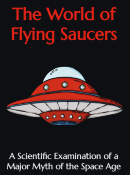
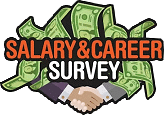


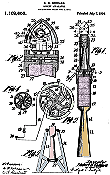

 Side-looking airborne radar (SLAR)
Side-looking airborne radar (SLAR)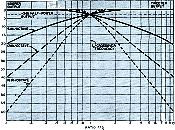
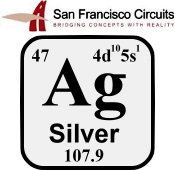
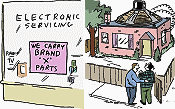



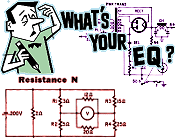

 John T. Frye
John T. Frye
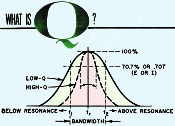
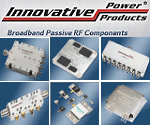 Innovative Power Products
Innovative Power Products
















